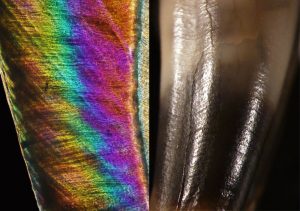When Griffith Associate Professor Tanya Smith entertains the World Science Festival Brisbaneaudience with the many tales teeth tell, they’ll be pondering much more than what they’ve just eaten at the Brainfood Breakfast event (22 March).
The Biological Anthropologist turns back time to reveal the secrets of ancient teeth and the stories they tell of human evolution, childhood development and prehistoric behaviour.
“Teeth have this amazing record locked inside them for million of years, “ says Associate Professor Smith.
“When we grow our teeth they’re almost like fossils already.”
Amazingly accurate records
Teeth don’t decay like other evidence of our evolution, holding records of birth and childhood growth inside them for millions of years.
And the former Harvard researcher, now part of the Griffith’s Australian Research Centre for Human Evolution (ARCHE), says they’re fortunate to have many tooth specimens to study, compared to the limited number of human bones in the fossil record.
“When we look at the human fossil record there are thousands and thousands of teeth from human ancestors as well as our evolutionary cousins,” says Associate Professor Smith.
With the advanced fossil dating techniques that ARCHE is expert in, the team is able to accurately geologically date ancient teeth to provide evidence of human evolution and migration patterns.
What is even more exciting is the evidence teeth hold for how an individual developed as a child, how long they were breastfed by their mother, and how the agricultural revolution may have changed weaning and child-rearing patterns in ancient human populations.
“There are a number of ways we can study diet from an individual’s teeth. One of my research questions is about nursing behaviour, and we can understand this through a special elemental signature of mother’s milk inside teeth. “
And what is absolutely amazing is how accurate scientists can be when they peer into the past.
“If an individual died before it stopped forming it’s teeth, we can count each individual daily line inside the teeth and figure out how old that individual was,” the Associate Professor says.
“In some cases I can be within a week or even a few days of an individual’s actual age at death.”

Growth lines inside a Neanderthal tooth – the child was approx 8 years old at death (Credit; Tanya Smith and Science magazine)
Teeth as status symbols
Teeth tell cultural tales too — past practises included intentional removal, filing, and even drilling teeth to embed precious jewels.
Ancient peoples would have had to ‘grit their teeth and bear it’ for the sake of these status symbols, while there’s also evidence of people enduring primitive dental surgery, sans anaesthetic, up to 15,000 years ago.
Tell-all book
“I spent 8 years at Harvard as an Associate Professor and coming to Australia was this amazing opportunity for me to explore a part of the world I had never been to, and to become involved in research specific to the Asia-Pacific region, which is really becoming more central to the story of human origins today.”
Associate Professor Smith has a forthcoming popular science book The Tales Teeth Tell: Development, Evolution, and Behavior due out from MIT Press later this year.
